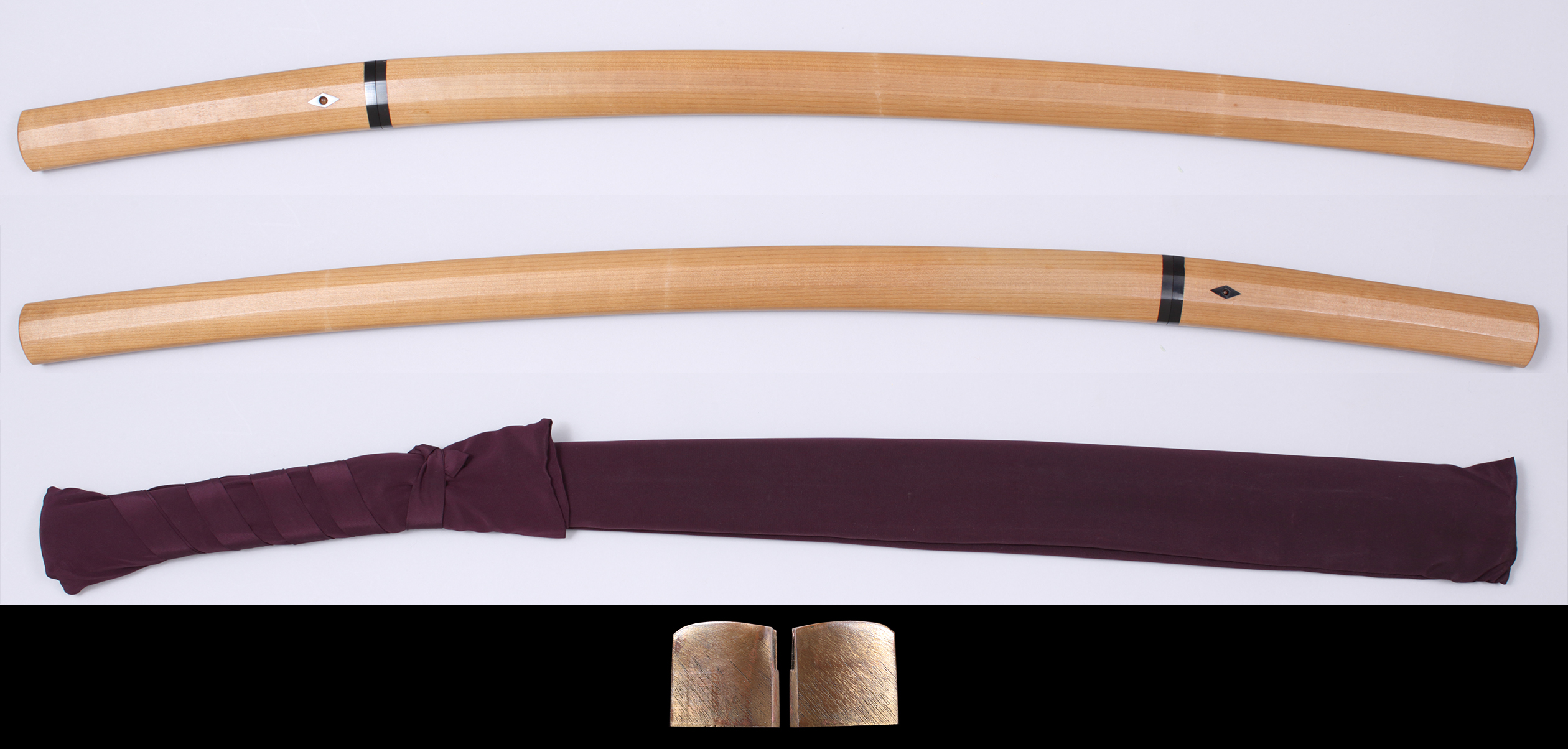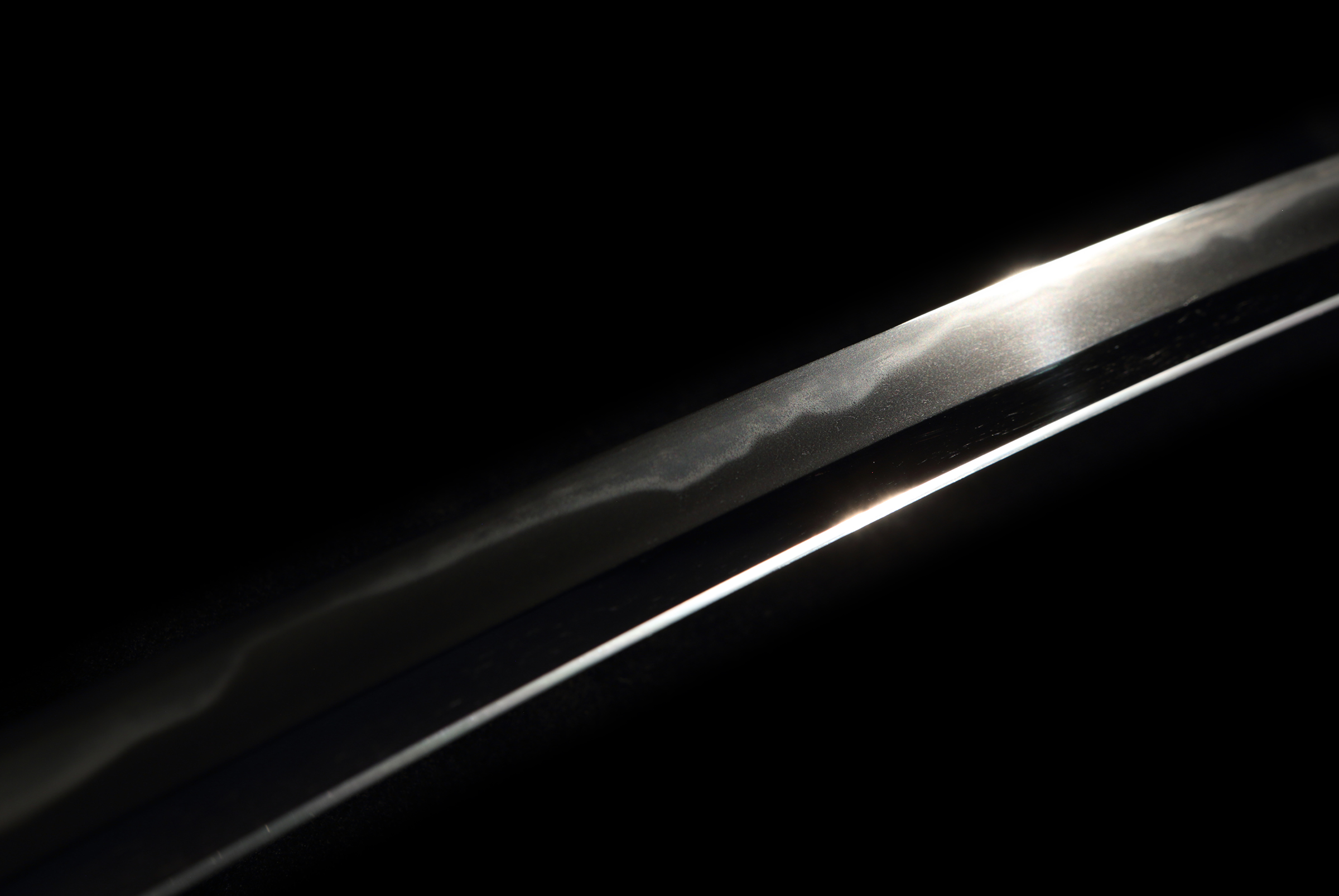[ Feature ]
Form : Shinogi-zukuri. Both mihaba and kasane are ordinal. High sori attached. Chukissaki form.
Nakago : Ubu. Yasurimes are suji-kais. Saki is kuri-jiri. One hole.
Jigane : Ko-itame-hada well grained. Mokumes mixed. Jinie attached. Chikei appeared.
Hamon : O-midare tend to be squared form. Nie attached well. Sunagashi appeared.
Boushi : It runs in sugu. It turns in komaru.
[ Highlight ] In Kaga, the Kaga shinto flourished in the Edo period (1603-1868), when the Maeda clan, the feudal lord of the Kaga domain, generously protected its best swordsmiths. This group of swordsmiths was made up of three lines of swordsmiths: the Fujishima and Darani lines of the native school, and the Kanewaka and others who had been introduced from Mino. In Jouou 3, when Maeda Tsunanori was 12 years old, i.e. 10 years after his inheritance, his grandfather Toshitsune, who was in charge of administration, selected 22 swordsmiths from his domain, had one sword forged each, and dedicated them to Zuiryuji, the family temple of his predecessor Marquis Toshinaga, in order to pray for Tsunanori's long military career.
Ietada, the swordsmith of this work, is listed as one of these 22 swordsmiths. Ietada was a son of Zenzaburo Ieshige of the Keicho period, a swordsmith of the Darani school, known as Kichibei, and his family name was Sunozaki. The first and second generations died in Meireki 1 and Kanbun 10 respectively, and both were highly skilled. He specialised in practical swords with strong and precise mokume forging, and his style of hako-midare and reverse checkered blade patterns is shared with Kanewaka, although they were from different lines. This piece also shows a typical style and is of good workmanship.
[ Conditions ] The blade is vertically aligned with the blade. The condition of the polishing is good with the exception of one horizontal scuff on the back under the monochiuchi and one very small edge spillage near the cutting edge, which can be preserved and appreciated in its current state.





